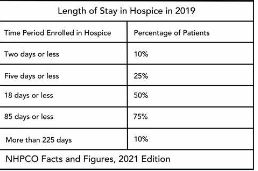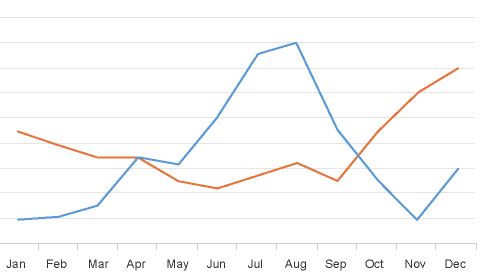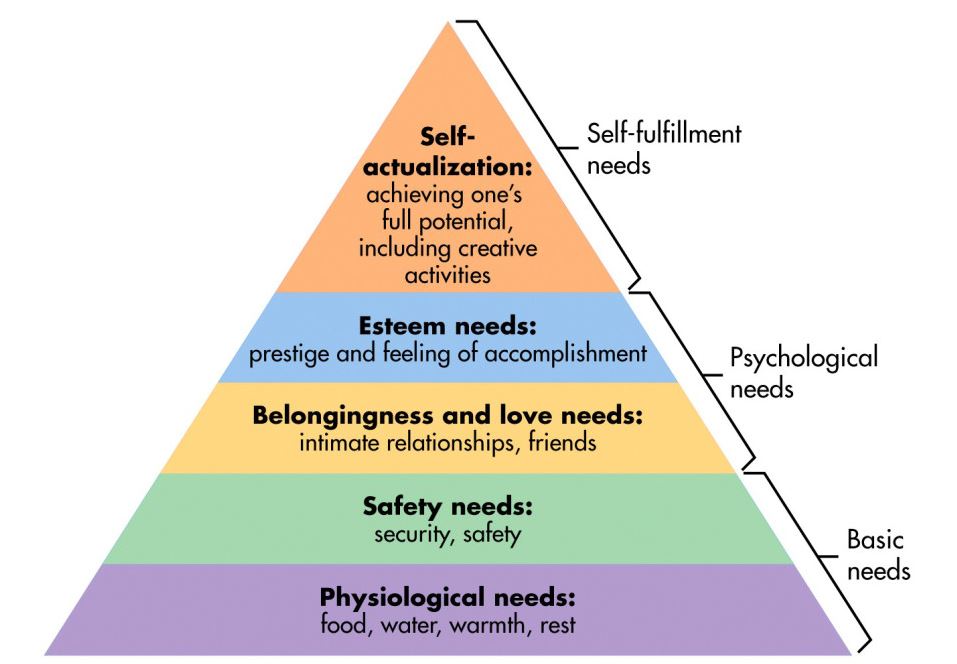
by editor | Feb 12, 2024 | Budgeting, Financials
Financial statements record an agency’s financial activities and convey the agency’s financial health. Financial statements are often audited by accountants to ensure their accuracy and are prepared in accordance with a specific set of accounting rules called Generally Accepted Accounting Principles (GAAP). GAAP ensures that financial statements are consistent and comparable across agencies.
In some instances, agencies are required to follow GAAP in preparing their financial statements. For example, the financial statements that are submitted with hospice cost reports must be prepared in accordance with GAAP.
An agency’s financial statements describe the results of the agency’s operations and provide information about the agency’s assets and liabilities, revenues and expenses as well as cash flow activities. Together, this information provides a picture of the agency’s financial health and activities and can be used to monitor agency performance over time. An agency’s financial statements can also be used to support decision-making.
There are three key financial statements
The three key financial statements are the balance sheet, the income statement, and the cash flow statement.
The balance sheet provides a snapshot of the agency’s financial health at a given point in time. It lists the agency’s assets and liabilities as of the last day of a specified period, also known as its capital structure. The balance sheet will usually be produced on a quarterly basis.
The income statement, also known as the profit and loss statement, provides information on all the agency’s revenue and expenses during a specified period. The income statement is usually prepared quarterly, often as an aggregation of internal monthly ledgers, and is used to review revenue and expenses over the period. Subtracting expenses from revenues results in the agency’s profit, also called the net income.
The cash flow statement details cash inflow and outflow over a specified time period. Cash flow statements are generally prepared quarterly and are separated into operating activities, investment activities, and financing activities. The cash flow statement, which tracks how the agency uses its cash over a period of time to fund operating expenses and investments and pay off its debt obligations, provides a view of the agency’s liquidity and cash sources and uses, which can provide insight into the ability of the agency to generate sufficient cash to support its operations over the near- and long-term horizon.
How can an agency director use financial statements?
Financial statements are critical to assess the financial viability of an agency, its capital structure, income generation and cash flow needs. Financial statements can also be used to measure the impact of initiatives on the agency’s bottom line. Compare direct expenses to revenue, as reported on the income statement. Did revenue increase? Were expenses reduced? How did the net income compare to expectations?
Financial statements also provide information on agency spend and cash flows and can provide insight into how cash uses are allocated. Periodically reviewing expenses, when necessary on a line by line basis from the relevant internal ledgers, can provide visibility into potentially unnecessary costs and areas where expenses can be reduced and spend can be reallocated to more productive areas.
Analysis of financial statements can provide an overall agency view of revenue and expenses, identifying how different areas in the agency are contributing to overall financial performance. This can support discussions with different area leads on goals and budgeting and helps management reassess overall agency performance. Financial statements can also be used to motivate and engage the agency’s teams. The income statement can show employees how their activities impact revenue, providing them with an understanding of how they can directly impact agency financial health. Remember, only a financially strong agency can deliver improved patient services and higher quality of care.
Where can you find out more?
Financial statements as a management tool
Business owner perspective on financial statements
: What are the three key financial statements?

by editor | Mar 22, 2023 | Compliance and Regulatory - Directors, Metrics and KPIs, Rules and Regulations - Nurses, Rules and Regulations - Office Team
Patient length of stay is monitored to detect instances of inappropriate use of the hospice benefit or other deficiencies in the services delivered by the hospice provider. Length of stay is monitored for both very short length of stay as well as for length of stay that is longer than the norm.
What may unusual length of stay tell a hospice provider?
When patients are discharged alive with a short length of stay it may signal that the patient did not understand the hospice benefit when the patient was admitted to hospice. Or, patients may discharge live from hospice after just a few days because they were not satisfied with the services delivered by the hospice provider. Patients with length of stay longer than 180 days could be indicative of a patient who is no longer hospice eligible. Patients who are no longer eligible for service should be discharged from hospice and any payments that were received from Medicare while the patient was no longer eligible for services should be returned to Medicare. Failure to discharge the patient or failure to return the funds are examples of fraud and abuse.
How is length of stay calculated?
Length of stay is calculated based on the number of days that a patient receives hospice care. Specifically, for a patient who is discharged from hospice (whether or not the patient is discharged alive), the patient length of stay is calculated as follows:
Patient length of stay = [patient discharge date]-[patient admission date]+1
Which patients are included in length of stay calculation?
The length of stay calculation assumes that only discharged patients are considered in the calculation – since the formula expressly refers to the patient discharge date. When only discharged patients are considered (whether live discharges or discharges due to death), the hospice provider only has a backward-looking view on performance relating to length of stay. For example, if a hospice provider has been providing service to a patient for 12 months and the patient is still on service, the patient will not be included in the traditional average length of stay metric – since the patient has not yet been discharged. On the other hand, once the patient is discharged the patient’s length of stay will be at least 365 days since the patient – while still currently active – has already been on service for 365 days. If active patients are considered in a length of stay calculation, it gives a hospice provider a metric that can be used to highlight patients whose clinical charts and documentation of care may benefit from additional review.
What length of stay metrics should be calculated?
In addition to computing average and median length of stay based on discharged patients only, average and median length of stay can be computed for active patients. Patient length of stay for an active patient is calculated as follows:
Active patient length of stay = [end of evaluation period date]-[patient admission date]+1
For example, suppose the current date March 15, 2023 and a hospice wishes to calculate the active patient length of stay as of the end of 4Q 2022 for a patient who was admitted on December 1, 2022. The calculation is as follows:
- End of evaluation period date: 12/31/22
- Patient admission date: 12/1/22
- Active patient length of stay = (12/31/22) – (12/1/22) + 1 = 31 days
The active patient length of stay as of the end of 4Q 2022 is 31 days.
If the hospice wishes to calculate the active patient length of stay as of current date, the calculation is as follows:
- End of evaluation period date: 3/15/23
- Patient admission date: 12/1/22
- Active patient length of stay = (3/15/23) – (12/1/22) + 1 = 105 days
Average and median length of stay would be computed as usual. If any concerning value — such as long length of stay – is identified based upon the active patient length of stay, a hospice provider can immediately investigate and determine if any remediation action is required, rather than waiting until patients are discharged. Delay can lead to additional fines or further action from Medicare.

by editor | Mar 22, 2023 | Compliance and Regulatory - Directors, Metrics and KPIs, Rules and Regulations - Nurses, Rules and Regulations - Office Team
Patients are eligible for hospice if they have a terminal diagnosis and a prognosis of six or fewer months to live if their disease runs its natural course. A patient who lives longer than six months can still get hospice care if the medical director or other hospice physician recertifies that the patient is still terminally ill.
What is hospice patient length of stay?
Hospice length of stay is an important metric that is monitored by both CMS and by hospice providers. Hospice length of stay measures the count of days that a patient receives hospice services, from the day that the patient is admitted into hospice until the day the patient is discharged (either alive or deceased). In 2018, 25% of Medicare beneficiaries received hospice care for seven days or less and 54% of Medicare beneficiaries received hospice care for 30 days or less.
Why should a hospice monitor patient length of stay?
Monitoring patient length of stay can aid in detecting cases of possible fraud or abuse – instances where ineligible patients continue to receive the hospice benefit. This metric also helps monitor whether the hospice benefit is being adequately utilized. Although patients are eligible for hospice when they have six months or less to live, most patients receive less than 30 days of hospice care.
Agency patient length of stay is also trended over time and is also compared against the value for patients in the same region, state, or nationwide. The metric may also be analyzed for patients in subpopulations – for example patients with the same disease, race, or ethnicity.
How is patient length of stay calculated?
Patient length of stay is calculated using all patients discharged by the hospice provider during the reporting period. For example, if the hospice would like to compute the length of stay for patients during the 4Q 2022, all patients who were discharged during 1Q 2023 would be included in the calculation. For each patient, the number of days from the date of patient admission until the date of patient discharge is counted; this represents the patient length of stay.
Patient length of stay = [patient discharge date]-[patient admission date]+1
What are common measures of length of stay?
Two common patient hospice length of stay measures are Average Length of Stay (ALOS) and Median Length of Stay (MLOS).
Average length of stay
Average length of stay is the arithmetic mean of the data collected. Specifically, if d is patient length of stay and N is the total number of patients then average length of stay (ALOS) is calculated as follows:
ALOS = ( d1 + d2 + d3 + …. + dn ) /N
Where di = patient length of stay for patient i
Median length of stay
Median length of stay is the middle number in the sequence of numbers. Specifically, compute the length of stay for all N patients. Then, order these N numbers in ascending order. The middle number is the median. If the number of patients is even then there is no middle number. Instead, the median is calculated by taking the average of the two numbers in the middle.
Comparing average and median length of stay
The average is sensitive to outliers in the data. That is, if there are a few patients with a very high length of stay while all other patients have a significantly lower length of stay, the average will be biased by these outliers and will give a misleading assessment of overall patient length of stay. Below, we give an example to provide greater intuition into the impact of outliers on average length of stay and the difference between mean and median length of stay.
Suppose a hospice agency discharged 35 patients during 4Q 2022. The patients’ lengths of stay are as follows:

We compute the average length of stay by summing each of the 35 patient’s length of stay (in the “Length of Stay” column) and dividing that total by 35 (the total count of patients).
Average length of stay (ALOS) = 38.5
We compute the median length of stay by sorting the patient’s length of stay in ascending order and identifying the central number. Since there is an odd number of patients, there will be a single central value. In this case, the central value is 20.
Median length of stay (MLOS) = 20
Average length of stay is almost double the median length of stay. What is leading to these significant differences between ALOS and MLOS? Observe the outliers in the data. There are two patients with length of stay that exceeds 200 days. There are two additional patients with length of stay exceeding 100 days. Since ALOS is sensitive to outliers, ALOS is being pulled to a higher value due to the presence of these outliers.
To provide additional insight, we have plotted a histogram of the length of stay values. A histogram shows the count of observations in the data that fall in each of the specified ranges.

The table on the left shows the count (frequency) of observations of patient length of stay in the data for each of the ranges: 0-10 days, 10-20 days, 20-30 days, 30-40 days, and greater than 40 days. There are 11 patients with length of stay between 0-10 days, 7 patients with length of stay between 10-20 days, 6 patients with length of stay between 20-30 days, 6 patients with length of stay between 30-40 days, and 4 patients with length of stay that exceeds 40 days.
Think about this histogram and now consider the MLOS and ALOS. Median length of stay is 20 days – it falls well in the middle of the data. Average length of stay, however, equals 38.5. It falls, essentially, in the final bar of this histogram and well beyond where the majority of the data lies. The provides a visual demonstration of the impact of outliers on ALOS.
Providers should monitor both ALOS and MLOS. Significant differences between these numbers would indicate the presence of outliers and should be investigated.
Print ‘n take hospice keys
- Understanding the difference between the average (mean) and the median
hospiceKeys-meanVsMedian
Where can you find out more?

by editor | Mar 22, 2023 | Human Resources, Interdisciplinary Team
How can your hospice organization find out what your employees are thinking? How do you know if your employees are satisfied? Dissatisfied? How do you know if employee satisfaction varies across different agencies in your organization? Do you have a systemic problem in one of your agencies? Is one of your regions better or worse than the others?
Using employee surveys to measure employee sentiment
Hospice organizations typically conduct employee surveys to try to dig into this information. Employee surveys are prepared by the corporate office and survey the entire organization – that is – all hospice agencies across the entire organization. The surveys are typically conducted no more frequently than once per year and involve significant planning and cost. A survey response rate of 70% is considered a good response rate.
Organization may also conduct more targeted “pulse surveys” – to gather the employee sentiment on a targeted issue. Pulse surveys are run more frequently, and a 50% response rate is considered a good response rate.
Using public data sources to measure employee sentiment
However, there is another valuable source of employee sentiment that is often overlooked by hospice organizations: both current and former employees post valuable company reviews on public employment websites. These reviews provide valuable and actionable insight that can be used to monitor employee sentiment, detect trends over time, identify differences between agencies or regions in the organization and a wealth of other useful information.
How can information from public websites be used?
How can a review from a public website be used to provide insight to a hospice agency? Let’s examine some reviews to see what insight can be gained.

Data points that we can gather from this review are the following:
- Rating: 5 star
- Employment status: current
- Date of review: March 10, 2023
- Type of employment: per diem
- Job role: Home recovery RN
- Location: Marshfield, WI
- General comments: supportive management
Here is another review:

Data points that we can gather from this review are the following:
- Rating: 5 star
- Employment status: former
- Date of review: April 10, 2017
- Type of employment: contractor
- Job role: data entry
- Location: Brentwood, TN
- General comments: excellent company to work for
Here is a third review:

Data points that we can gather from this review are the following:
- Rating: 3 star
- Employment status: former
- Date of review: August 1, 2021
- Type of employment: full time
- Job role: Patient care coordinator
- Location: Vestavia Hls, AL
- General comments: management does not respond to input
How can the data be stored so maximum value can be extracted?
A hospice agency should store the data in a database format – either in a database or in a spreadsheet – so that maximum value can be extracted. By storing the data in this manner, metrics of interest and can be created. Performance over time can be monitored. We provide an example below. Suppose the three reviews above are for three different locations for the same hospice organization – one for an agency located in Marshfield, WI, one for an agency located in Brentwood, TN, and one for an agency located in Vestavia Hls, AL. The data can be stored in a spreadsheet as follows:

Additional columns in the spreadsheet can be added to provide additional information. For example, categories of interest may be:
- classify the employee type by categories such as clinical, corporate, office team, etc.
- classify the city / state by regions in the organization.
As the number of rows in the spreadsheet grows patterns can be identified and valuable metrics can be created and monitored – in time and over time.
Where can you learn more?

by editor | Jan 29, 2023 | Human Resources, Interdisciplinary Team
Maslow’s hierarchy of needs is a theory that can be used to provide leaders and organizations with guidance on how to motivate employees. But what is this hierarchy and what is Maslow’s theory?
What is Maslow’s Hierarchy of Needs?
Maslow developed his theory on the Hierarchy of Needs in the 1940s. The hierarchy suggests that people are first motivated to fulfill basic needs before they move on to more advanced needs.
The theory states that there are five fundamental human needs that can be represented as a pyramid. Each of the five needs builds on the prior need. Individuals want to meet needs at a lower level before progressing to needs at a higher level.
The highest-level need in Maslow’s hierarchy is self-actualization, where an individual achieves self-fulfillment.
How does Maslow’s Hierarchy of Needs relate to leadership?
A good manager understands this hierarchy of needs and leads his team so that he is meeting each employee at the employee’s current level of need while simultaneously encouraging the employee to continue to move up the pyramid so that the employee eventually achieves self-actualization. In the workplace, self-actualization translates to an employee’s desire to maximize his potential at work.
What are the levels of the hierarchy?
In Maslow’s hierarchy, Level 5 is the lowest level and Level 1 is the highest level. An individual or employee will start at a lower level and move up levels as he tries to achieve the highest level in the hierarchy.
Level 5: Psychological needs – survival
This is a most basic need for survival. Employees at this level want to feel secure that they have a steady income.
Level 4: Safety and security
Managers and leaders need to make employees feel secure. Some managers do not realize this and think that employees will work harder if they are “kept on their toes.” But this strategy usually fails. Rather than working harder, employees become obsessed with job security.
- How can a leader make employees feel secure?
- Communication: Share the big picture with employees.
- Clear rules: Employees should know where they stand at all times
- Be supportive: Support employees if they are struggling or if they fail
- Be consistent: Be the same every day
- Be fair
Level 3: Belonging (social needs)
Employees enjoy a team environment and a social workplace.
- How can a leader create a social environment and a feeling of belonging?
- Conduct team meetings
- Create an area where people can gather, e.g., for coffee
- Encourage a feeling that people are a part of the team
- Organize social events outside of work
Level 2: Esteem/status
Employees want to be noticed, on occasion, and to stand out for their accomplishments and for what they do better than others. People like to feel important, occasionally.
- How can a leader meet this need of employees to feel important?
- Give employees regular recognition
- Spend time with employees
Level 1: Self actualization
Self-actualization is maximizing an self-fulfillment where an individual discovers his potential and uses his skills to the utmost. This is the highest level of Maslow’s hierarchy, where employees are maximizing their potential at work.
- How can a leader help employees maximize their potential?
- Give employees ownership of tasks or projects
- Empower employees
- Help employees find ways to advance in their careers
What defines a great organization?
Maslow believes that in a great organization, employees will be at the level of self-actualization. That is, all employees must achieve Level 1. For employees to achieve Level 1, leadership must support employees through all the lower levels of the hierarchy. The pyramid will crumble if employees are lacking the supporting levels.
Further, leadership must make it possible for employees to achieve self-actualization. Employees need to be trained, to acquire new skills, and to have an environment where they gain a sense of satisfaction. A good leader will learn his employees’ potential and create an environment where people are trusted, can flourish, and are given important tasks to complete. A good leader will create an environment where employees can achieve self-actualization.
Where can you find more information?

by editor | Jan 29, 2023 | Compliance and Regulatory - Directors, Metrics and KPIs
Why is data valuable?
Like all other business decisions, a hospice marketing plan must be data driven. More progressive hospice agencies have increasingly begun to understand the value of many types of data in supporting business decisions. This includes internal data such as patient EMR data, financial data including general ledger revenue and expense data (at various levels of aggregation), and quality data. It also includes external data such as publicly available claims data, cost report data, and referral data.
This article published in June 2021 discusses how hospice agencies are using data analysis as a tool to gain an edge over competitors when engaging with potential referral sources. The discussion focuses on use of data analysis to identify which physicians represent referral sources that are more likely to produce (higher quality) referrals. This 2016 NHPCO article discusses the use of hospice metrics as a marketing tool. For example, a hospice agency can share statistics on reduction in hospital admissions for its patients in hospice compared to hospital admissions prior to hospice admission. Other metrics on cost of care or patient satisfaction are of interest, depending upon the referral source.
What data is valuable for designing a marketing strategy?
A hospice should gather data so that it can develop a complete picture of the customers that it serves. It should analyze its patients – including referral sources and patient attributes such as patient diagnosis, length of stay, and patient demographics. Referral sources can be analyzed at different levels of aggregations such as geographic location, facility type, physician type, and physician name. Analysis of hospice patients should be compared to analysis of data for the entire market (in the relevant geographic region). This can help a hospice agency identify where it may have strengths or weaknesses and contribute to its marketing strategy.
Analyze the data: gain input from multiple sources
When analyzing the output of the data analysis, the hospice agency should solicit input from multiple sources in the organization. Combining different perspectives on the data such as input from the executive, marketing, and clinical teams will provide a more holistic view and a more accurate assessment of the current marketing performance and how the go-forward marketing strategy should be designed.
How can the data be analyzed?
The simplest method for analyzing the data is to use Microsoft Excel. Excel is widely used in most organizations, so gaining access to this software should not be difficult. With relatively simple commands, one can analyze data and create charts to visualize the results of data analysis. Another benefit of using Excel for data analysis is that a lot of educational material is available on the Web to answer any questions that you may have about using Excel – in case there are data analysis functions that you want to learn more about.
What other information may be relevant to developing a strategy?
Patient data and claim data are historical data that are important inputs to a developing a marketing strategy. A hospice agency should also analyze forward-looking data as well as more general information such as:
- What are hospice market trends in the geographic region?
- How competitive is the marketplace and are there expectations for change in competition in the near term?
- How well is the role of hospice understood by communities in the geographic region?
- Is the use of hospice accepted by communities in the geographic region?
- Is hospice understood by the medical community in the geographic region?
- What are the demographics of your geographic region and are they expected to change in the near term?
Combining analysis of historical and forward-looking data and soliciting input from team members with different perspectives such as operational, clinical, and marketing will help a hospice agency develop an effective marketing plan.
Where can you find out more?
Using hospice metrics for marketing






